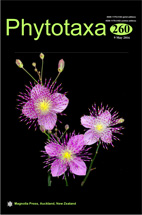Abstract
Two collections of Pleurotus giganteus and one collection of Pl. tuber-regium from Mengsong in Yunnan Province, China, and commercially grown strains of Pl. giganteus and Pl. tuber-regium from Jiangxi Province, China were identified using macro and micro morphological characters. The identification was also confirmed by phylogenetic analysis using Internal Transcribed Spacer (ITS) universal primers. Phylogenetic analyses of ITS-1-5.8S-ITS2 rDNA sequence data of collections of Pl. giganteus from Sri Lanka (epitype), Thailand, Malaysia and Pl. tuber-regium from Australia, Cameroon, China, Ghana, Malaysia, Nigeria, and Papua New Guinea using maximum likelihood, maximum parsimony and Bayesian inference showed that Pl. giganteus forms a strongly supported clade with Thai and Chinese Pl. giganteus, while the Chinese Pl. tuber-regium clade with Cameroon, Ghana and Nigeria samples with strong support. In this paper, we clarify the identifications of the two edible cultivated mushrooms, Pl. giganteus and Pl. tuber-regium in China.

